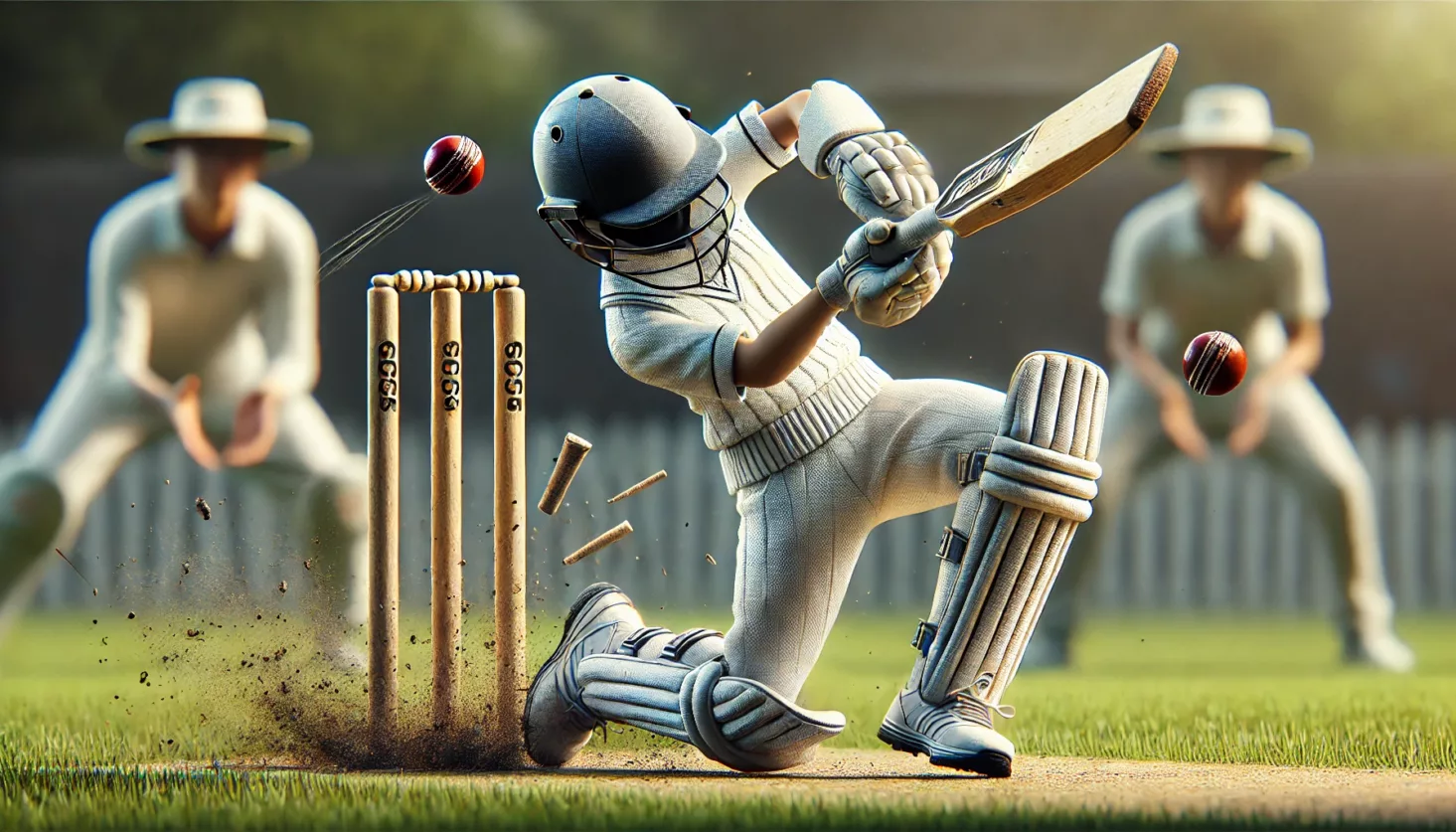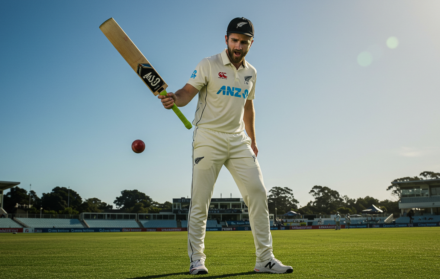
Safety Guidelines for Kids Playing Cricket
The gentle thud of a cricket ball, the exhilarating rush of a well-timed shot, and the collective cheers of teammates create a symphony that resonates across cricket fields, encapsulating the spirit and passion embedded in the sport.
While cricket brings with it the joys of teamwork, strategy, and healthy competition, ensuring the safety of our young enthusiasts, especially children embracing the sport, becomes paramount. The intertwining of fun and safety is crucial to foster a nurturing environment where budding cricketers can explore, learn, and grow within the realms of the beloved sport.
Cricket, with its dynamic nature, involves various physical activities, including running, batting, and bowling, each carrying its own set of challenges and risks, particularly for younger players who are still in their developmental stages.
The vitality of establishing and adhering to essential safety guidelines becomes not just necessary but imperative to safeguard them from potential injuries and to ensure their experiences with the sport are both positive and enriching.
It’s not merely about teaching them the rules of the game but ensuring that the playground becomes a haven where their skills, passion, and love for the sport can blossom safely and securely.
As we delve into the essential safety guidelines for kids playing cricket, we embark on a journey that goes beyond the boundaries of the cricket field, exploring the various facets that encompass their physical, emotional, and psychological well-being.
From the appropriate gear and equipment to the importance of proper training, every aspect plays a pivotal role in crafting a secure and encouraging space where children can explore the realms of cricket, unbridled and free from worry.
Join us, as we navigate through these guidelines, ensuring that every child who steps onto the cricket field is not only equipped with the right gear and knowledge but is also enveloped in a safety net that allows them to explore, enjoy, and evolve in the world of cricket, fostering a future where their passion for the sport can thrive unbounded.
Wear Proper Protective GearWearing proper protective gear is crucial for the safety of children participating in cricket. Here is a breakdown of the gear that should be worn while playing:
Cricket helmet: It is essential for all players, especially batsmen and wicket-keepers, to wear a properly fitted helmet with a strong faceguard to protect their head against injuries.
Leg pads: Both batsmen and wicket-keepers should wear leg pads to shield their knees and shins from the impact of the ball.
Gloves: Batsmen and wicket-keepers should wear gloves to safeguard their hands while batting or catching the ball.
Abdominal guard: Batsmen should wear an abdominal guard to protect their groin area.
Thigh guard: Batsmen may also choose to wear a thigh guard to shield their thighs from fast-moving or bouncing balls.
Arm guard: Batsmen have the option of using arm guards to protect their forearms.
Cricket shoes: Players should wear appropriate cricket shoes with spikes for better grip on the ground.
Wearing suitable protective equipment is vital to ensure the safety of children participating in cricket. The gear such as helmets, leg pads, gloves, abdominal guard, thigh guard, arm guard, and cricket shoes provide the necessary protection. Over time, the development of advanced protective gear has significantly reduced injuries in cricket. Manufacturers have focused on creating specialized equipment to address safety concerns and make the game safer for everyone involved.
Use Age-Appropriate Equipment
When it comes to children playing cricket, it is crucial to use age-appropriate equipment for their safety and to improve their playing experience.
Selecting the correct size bat is important: Choose a cricket bat that is suitable for the child’s height and age. Using a bat that is too heavy or too long can impact their technique and increase the risk of injury.
Ensure that the child wears a properly fitting helmet: The helmet should cover the forehead, temples, and the back of the head adequately to protect against injuries.
Use appropriate leg pads: Leg pads should cover the legs from the ankle to just below the knee. They should fit securely without restricting movement.
Wearing gloves is essential: Choose gloves that fit well and provide enough grip on the bat to protect the child’s hands and fingers.
Wear sturdy footwear: Proper cricket shoes with rubber spikes or studs provide stability and traction, reducing the risk of slips and falls.
Using age-appropriate equipment ensures safe play and helps young cricketers develop their skills. Coaches, parents, and players must understand the importance of using the right gear to prevent accidents and injuries.
Play in a Safe Environment
When participating in the sport of cricket, it is of utmost importance to prioritize safety and provide a safe environment for the wellbeing and enjoyment of children.
Playgrounds and fields should be thoroughly inspected for any potential hazards, such as rocks or broken glass, to ensure the ground conditions are safe. It is crucial for children to wear protective gear like helmets, pads, gloves, and abdominal guards to prevent injuries.
Proper supervision by responsible adults or coaches is essential during matches and practice sessions to avoid accidents and provide guidance for the children. Boundaries of the playing area should be clearly marked to prevent collisions or accidents with objects outside the field.
It is also important to regularly inspect the cricket equipment for any defects or damage that could pose risks during play. Teaching children the basic safety rules, such as not intentionally throwing the ball at others or engaging in dangerous tackles, is vital.
In outdoor matches, it is crucial to stay vigilant about weather conditions. In case of bad weather, the game should be immediately stopped, and shelter should be sought to ensure the safety of the children.
By following these guidelines and prioritizing safety, children can enjoy the game of cricket with reduced risk, thus enhancing their overall experience and fostering a love for the sport in a safe environment.
Follow Proper Warm-up and Stretching Techniques
When engaging in a game of cricket, it is crucial to follow proper warm-up and stretching techniques to prevent injuries and enhance performance. Here are the steps to be followed:
1. Begin by engaging in a gentle jog or brisk walk for 5-10 minutes to increase blood flow and warm up the muscles.
2. Perform dynamic stretches such as leg swings, arm circles, and torso twists to loosen the joints and improve flexibility.
3. Participate in specific cricket warm-up exercises like high knees, butt kicks, and jumping jacks to activate the muscles used during the game.
4. Gradually increase intensity by performing sport-specific movements like batting practice, throwing, and catching drills.
5. Include static stretches at the end of the warm-up to elongate the muscles and improve range of motion. Hold each stretch for 15-30 seconds without bouncing.
6. Focus on stretching key muscle groups used in cricket, including the calves, quadriceps, hamstrings, groin, shoulders, and wrists.
By following these proper warm-up and stretching techniques before playing cricket, you can reduce the risk of muscle strains, sprains, and other injuries. It also prepares your body for the demands of the game, leading to better performance on the field.
Fact: Studies have shown that following proper warm-up exercises and stretching techniques can increase muscle efficiency and prevent injuries by up to 50%.
Learn and Practice Proper Technique
Learning and practising proper technique is vital for children who play cricket in order to develop skills and minimize the risk of injury. Please follow these steps:
1. Hold the bat correctly: Maintain a firm and balanced grip on the bat with both hands, keeping them near the top of the handle.
2. Adopt the correct batting stance: Stand with your feet shoulder-width apart, slightly bend your knees, and distribute your weight evenly between both feet.
3. Master the backlift: Place the bat behind your back shoulder, parallel to the ground, to execute a smooth and powerful swing.
4. Practice the forward defensive shot: Take a step forward towards the ball and bring the bat down in a straight vertical swing to protect the wicket.
5. Learn the backfoot defence: Transfer your weight onto the back foot and play a defensive shot with the bat held close to your body and your head steady.
6. Perfect the front foot drive: Step forward towards the ball, shift your weight onto the front foot, and execute a straight horizontal swing through the line of the ball.
7. Practice the pull shot: Transfer your weight onto the back foot and use a horizontal swing to hit short-pitched deliveries towards the leg side.
8. Learn proper bowling technique: Focus on a smooth and balanced run-up, execute a consistent bowling action, and aim to deliver the ball in the correct areas of the pitch.
9. Master fielding skills: Learn the correct techniques for catching, ground fielding positions, and throwing in order to become a valuable fielder.
10. Engage in regular net practice: Regularly practice these techniques in the nets to improve consistency, timing, and overall performance.
By diligently learning and practising proper technique, young cricketers can enhance their skills and enjoy a safer and more successful cricketing experience.
Stay Hydrated
Staying hydrated is crucial for children who are playing cricket. It is important for them to stay hydrated throughout the day, especially during cricket matches or practice sessions. Here are some points to consider to help children stay hydrated:
- Drink plenty of water: Children should aim to drink at least 8-10 glasses of water every day. This will help them stay hydrated and perform well during cricket games.
- Take hydration breaks: It is important for children to take regular breaks during the game to ensure proper hydration. Encourage them to drink water during these breaks to replenish fluids lost through sweating.
- Sports drinks: While water is the best choice for hydration, sports drinks can be used occasionally during intense physical activity. These drinks contain electrolytes that help replace minerals lost through sweating. It is still important for children to primarily rely on water for hydration.
- Avoid sugary or caffeinated drinks: Children should avoid sugary sodas, energy drinks, and caffeinated beverages while playing cricket. These drinks can cause dehydration and negatively impact their performance.
- Recognize signs of dehydration: Teach children to recognize signs of dehydration, such as increased thirst, dry mouth, fatigue, dizziness, and reduced urine output. If any of these signs are noticed, immediate hydration should be prioritized.
- Hydrate before and after the game: In addition to staying hydrated during the game, children should also hydrate well before and after the match. This will ensure optimal performance and aid in recovery.
Remember, staying hydrated is essential for children playing cricket. Encourage regular water intake and make hydration a priority in their sports routine.
Play Under Adult Supervision
Playing cricket under adult supervision is crucial for the safety and well-being of children. Here are some reasons why it is essential:
1. Ensure safety: Playing under adult supervision helps to reduce the risk of accidents and injuries. By closely monitoring the game, adults can intervene if necessary to prevent dangerous situations.
2. Provide guidance and instruction: Adults offer valuable guidance and instruction to young cricket players. They teach proper techniques, rules of the game, and strategies, enabling children to develop their cricket skills effectively.
3. Supervise fair play: Adults ensure fair play and sportsmanship during the game. They teach children about playing by the rules, respecting opponents, and displaying good sportsmanship.
4. Handle conflicts: Adults effectively manage conflicts or disagreements that may arise. They teach children how to peacefully resolve conflicts, fostering good relationships among players.
5. Promote discipline: Playing under adult supervision promotes discipline and respect for authority. Children learn to listen and follow instructions, leading to improved overall behavior and discipline.
6. Emergency response: In case of emergencies or injuries, adults can provide immediate assistance and medical aid. They are trained to handle such situations and ensure prompt and appropriate action.
7. Create a positive environment: Adults can create a positive and enjoyable playing environment. They encourage and motivate children, boosting their confidence and enthusiasm for the game.
Playing cricket under adult supervision is vital for the safety and development of young players. It enables a nurturing and supportive environment where children can learn, grow, and enjoy the game to the fullest.
Know and Understand the Rules of the Game
Knowing and understanding the rules of cricket is essential for a safe and enjoyable experience. Here are some key points to consider:
1. Familiarise yourself with the basic rules: Before playing cricket, understand how to score runs, methods of dismissal, and fielding positions.
2. Learn about player safety: Know the safety rules and regulations, wear protective gear like helmets, pads, and gloves, and use proper technique when batting, bowling, and fielding.
3. Follow fair play and sportsmanship guidelines: Respect the spirit of the game, umpire decisions, and maintain good conduct on and off the field.
4. Keep up with rule changes and updates: Stay updated by regularly checking official cricket websites or consulting experienced players and coaches.
By knowing and understanding the rules of cricket, players can fully enjoy the sport while ensuring safety.
Cricket has a rich history dating back to the 16th century. Originating in England, it quickly spread worldwide under British colonial influence. The first recorded cricket match took place in 1646, and the sport gained popularity in the 18th century.
Cricket has evolved with established rules and regulations, becoming a global sport with international competitions like the ICC Cricket World Cup and the Ashes series. Today, cricket is played at various levels, from local recreational matches to professional leagues and international tournaments. Its enduring legacy and widespread appeal make cricket a beloved sport.
Be Aware of Surroundings
When playing cricket, it is crucial to be aware of your surroundings for safety and to avoid accidents. Here are some significant considerations:
- Obstacles: Take note of trees, rocks, or uneven ground in the field. These can result in injury if you collide while running or diving for the ball.
- Field Conditions: Pay close attention to holes, loose soil, or wet patches. These factors can impact your balance and cause slips or falls.
- Other Players: Keep an eye on the movement and positioning of your teammates and opponents to prevent collisions during catches, run-outs, or while running between wickets.
- Spectators: Be mindful of the spectators near the field. Avoid hitting the ball towards the crowd and ensure that your shots or throws do not put them at risk.
- Boundary Lines: Stay aware of the boundaries to prevent stepping out of bounds or misjudging catches. This helps maintain fair play and avoids penalties.
Pro-tip: Foster open communication among players. Utilize clear signals to indicate your movements and intentions, reducing confusion and potential accidents. Being aware of your surroundings and practicing effective communication enhances safety and enjoyment while playing cricket.
Take Breaks and Rest When Needed
Kids playing cricket should prioritize taking breaks and resting when needed in order to avoid experiencing fatigue and sustaining injuries. By being attentive to their bodies and recognizing signs of exhaustion, such as fatigue, muscle soreness, or difficulty concentrating, children can ensure their well-being.
To promote their overall health, it is recommended to establish regular breaks within practice sessions or matches, providing intervals every 45 minutes to an hour. These breaks, lasting around 10-15 minutes, allow children to rest, replenish hydration, and recover.
It is crucial to remind young cricketers to stay hydrated throughout the game to maintain optimal energy levels and prevent any heat-related illnesses.
Children should be encouraged to engage in light stretching exercises during breaks to prevent muscle stiffness, enhance flexibility, and decrease the likelihood of injuries.
Teaching kids to pace themselves and avoid exceeding their limits is of utmost importance. By taking breaks and listening to their bodies, they can avoid overexertion and minimize the risk of injuries.
Always remember that the primary objective is to ensure the safety and well-being of young cricketers. By incorporating regular breaks and rest periods into their practice or game routines, you will create a healthy and enjoyable cricket experience for them.
What Are the Most Common Cricket Injuries in Kids?
Cricket injuries in children can often be prevalent. What are the most common cricket injuries in kids? Here are the most frequent cricket injuries in children:
Fractures: Fractures frequently occur in the hands, fingers, and arms when a ball is struck with force or when catching the ball.
Strains and sprains: Legs, ankles, and wrists are susceptible to strains and sprains, particularly during running, jumping, or fielding.
Contusions: Bruises can occur when the body is struck by a ball, especially in sensitive areas such as the abdomen, chest, or head.
Cuts and lacerations: Contact with cricket equipment or sharp objects on the field can result in cuts and lacerations.
Eye injuries: Eye injuries can occur when a ball hits the face or eye region, so it is important for children to wear protective equipment like helmets with face guards.
To prevent these injuries, children should wear appropriate protective gear such as helmets, pads, and gloves. They should also practice proper technique and warm up before playing. Supervision and coaching are essential to ensure safety and adherence to the game’s rules.
While cricket can be an enjoyable sport for children, it is crucial to prioritize their safety and take preventive measures to avoid common injuries.
How Can Parents Ensure the Safety of Their Children While Playing Cricket?
Parents play an important role in ensuring the safety of their children while playing cricket. How can parents ensure the safety of their children while playing cricket? Here are some strategies that parents can use to create a safe playing environment for their children:
1. Provide protective gear: To ensure the safety of their children, parents should make sure that they wear helmets, pads, and gloves.
2. Use equipment that is appropriate for the child’s age: Parents need to select equipment that is suitable for the child’s age and size in order to minimize accidents.
3. Create a safe environment: Parents should encourage their children to play in open areas that are away from roads or obstacles. It is important to remove potential hazards such as rocks or glass.
4. Teach proper warm-up and stretching: Educating children about the importance of warming up and stretching is crucial to prevent muscle strains or sprains.
5. Promote proper technique: Parents can enroll their children in coaching programs or encourage them to practice with experienced players to minimize injuries caused by poor form or swings.
6. Ensure hydration: Parents should remind their children to drink water or sports drinks during breaks to prevent dehydration and heat-related illnesses.
7. Supervise play: It is important for parents to keep an eye on their children, especially younger ones, to ensure that they follow the rules and address any potential dangers.
By implementing these strategies, parents can greatly contribute to the safety and well-being of their children while they are playing cricket.
What First Aid Measures Should Be Taken in Case of Cricket Injuries?
When it comes to cricket injuries, it is important to administer first aid promptly to ensure proper care and minimize further damage. So, what first aid measures should be taken in case of cricket injuries?
The first step is to assess the injury and evaluate its extent. Determine if it can be treated on-site or if it requires professional medical attention.
In case of bleeding, apply gentle pressure using a clean cloth or bandage to stop it. If possible, elevate the injured area to reduce blood flow.
The RICE treatment is highly recommended for sprains, strains, or joint injuries. Rest the injured area, apply ice to reduce swelling, use compression bandages, and elevate the injured limb to reduce inflammation.
If a fracture is suspected, it is important to stabilize the injured limb using a splint or makeshift support until medical help arrives.
Cuts and abrasions should be treated by cleaning them with mild soap and water to prevent infection. Apply antiseptic ointment and cover with a sterile bandage or dressing.
For pain relief and to reduce inflammation, administer over-the-counter pain relievers like paracetamol or ibuprofen following the recommended dosage.
If the injury is severe, not improving, or if there is uncertainty about its nature, seeking medical attention from a healthcare professional is crucial for further evaluation and treatment.





